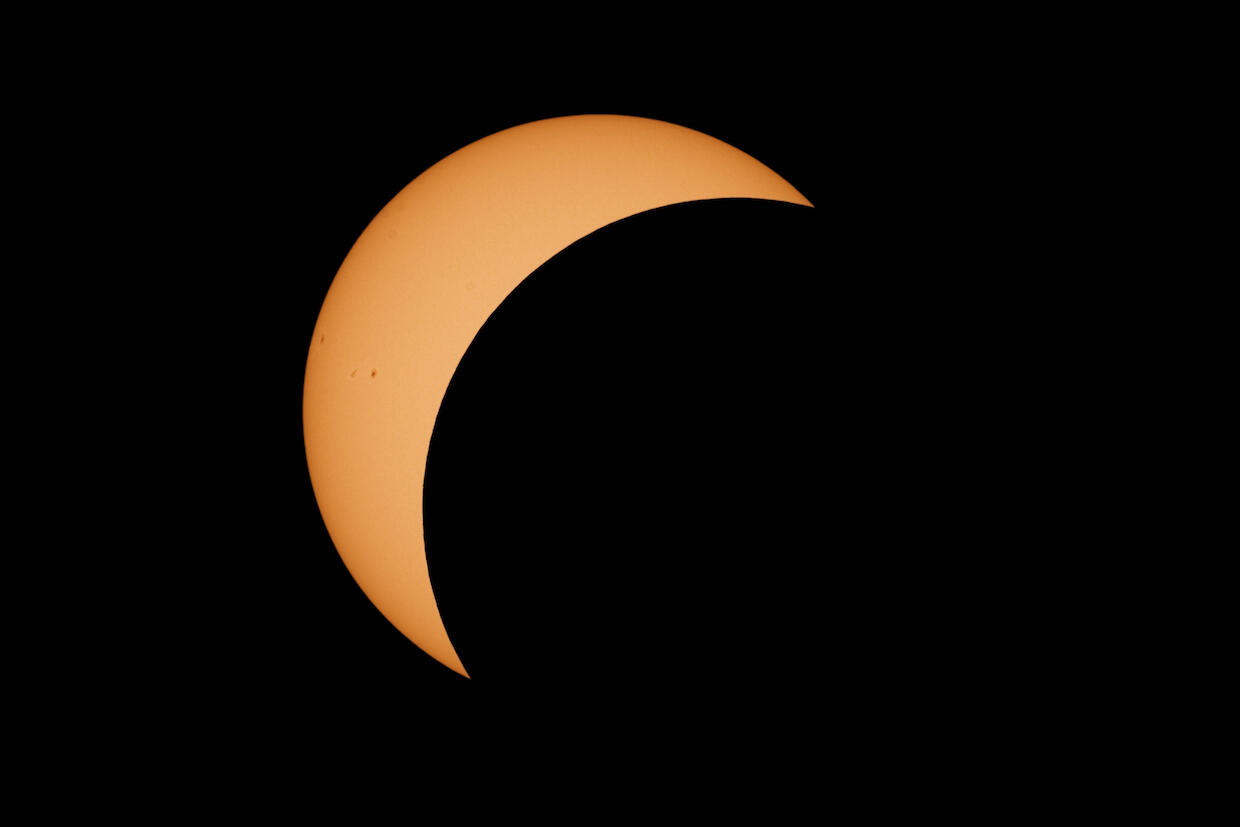
March 25, 2024
Here’s what you should know about the upcoming eclipse
Share this story
On April 8, Richmond will experience its first partial solar eclipse in nearly seven years. Though the city is about 400 miles east of the eclipse’s path of totality – a narrow corridor stretching from Texas to Maine in which the moon’s shadow will completely obscure the sun – local astronomy enthusiasts can still get a pretty good view right from their own backyard.
In addition to making for pretty neat viewing, eclipses have contributed to a number of scientific discoveries. According to NASA, solar eclipses helped scientists with everything from unearthing evidence for the theory of general relativity to discovering a new element.
“Eclipses display direct evidence of how the sun and moon are arranged,” said Robert Gowdy, Ph.D., associate chair in the Department of Physics at Virginia Commonwealth University’s College of Humanities and Sciences. “They let scientists observe starlight in the daytime.”
Though total solar eclipses occur somewhere on Earth about every 18 months, getting to see one can be rare. For example, Gowdy said, the next one visible from Richmond will be in 2099. Partial solar eclipses are more common: The most recent one visible from Richmond was in August 2017, and a 50% partial eclipse will be visible from Richmond in 2029.
To mark the upcoming eclipse, the VCU Physics Department will host a viewing party from 2 to 4 p.m. on April 8 at either Monroe Park or the Compass. The eclipse will begin at 2:02 p.m., but the best time to catch a glimpse is at 3:19 p.m., when 86% of the sun will be blocked.
Gowdy warned astronomy enthusiasts to not look at the sun without approved eclipse glasses, as doing so without proper protection could result in permanent vision damage. For those without access to eclipse glasses, an eclipse viewer can be fashioned out of two sheets of paper. To see the eclipse, let the sunlight shine through a pinhole in one sheet and fall on the other sheet, where an image of the sun will appear.
Any other tips?
“Hope for clear skies,” Gowdy said.
Subscribe to VCU News
Subscribe to VCU News at newsletter.vcu.edu and receive a selection of stories, videos, photos, news clips and event listings in your inbox.







